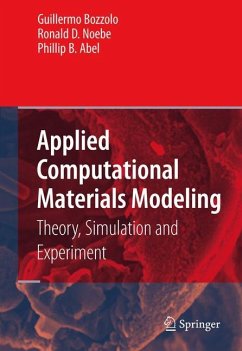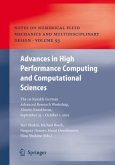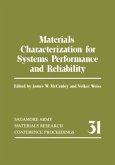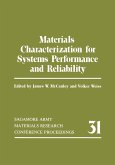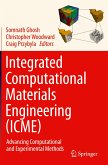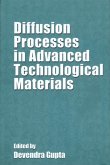The scope of this book is to identify and emphasize the successful link between computational materials modeling as a simulation and design tool and its synergistic application to experimental research and alloy development. The book provides a more balanced perspective of the role that computational modeling can play in every day research and development efforts. Each chapter describes one or more particular computational tool and how they are best used.
While it is tempting to label computational materials modeling as an emerging field of research, the truth is that both in nature and foundation, it is just as much an established field as the concepts and techniques that define it. It is the recent enormous growth in computing power and communications that has brought the activity to the forefi-ont, turning it into a possible com ponent of any modem materials research program. Together with its increased role and visibility, there is also a dynamic change in the way computational modeling is perceived in such a vast field as materials science with its wide range of length and time scales. As the pace of materials research accelerates and the need for often inaccessible information continues to grow, the de mands and expectations on existing modeling techniques have progressed that much faster. Primarily because there is no one technique that can provide all the answers at every length and time scale in materials science, excessive expectations of computational materials modeling should be avoided if pos sible. While it is apparent that computational modeling is the most efficient method for dealing with complex systems, it should not be seen as an alter native to traditional experimentation. Instead there is another option, which is perhaps the one that is most likely to become the defining characteristic of computational materials modeling.
While it is tempting to label computational materials modeling as an emerging field of research, the truth is that both in nature and foundation, it is just as much an established field as the concepts and techniques that define it. It is the recent enormous growth in computing power and communications that has brought the activity to the forefi-ont, turning it into a possible com ponent of any modem materials research program. Together with its increased role and visibility, there is also a dynamic change in the way computational modeling is perceived in such a vast field as materials science with its wide range of length and time scales. As the pace of materials research accelerates and the need for often inaccessible information continues to grow, the de mands and expectations on existing modeling techniques have progressed that much faster. Primarily because there is no one technique that can provide all the answers at every length and time scale in materials science, excessive expectations of computational materials modeling should be avoided if pos sible. While it is apparent that computational modeling is the most efficient method for dealing with complex systems, it should not be seen as an alter native to traditional experimentation. Instead there is another option, which is perhaps the one that is most likely to become the defining characteristic of computational materials modeling.

